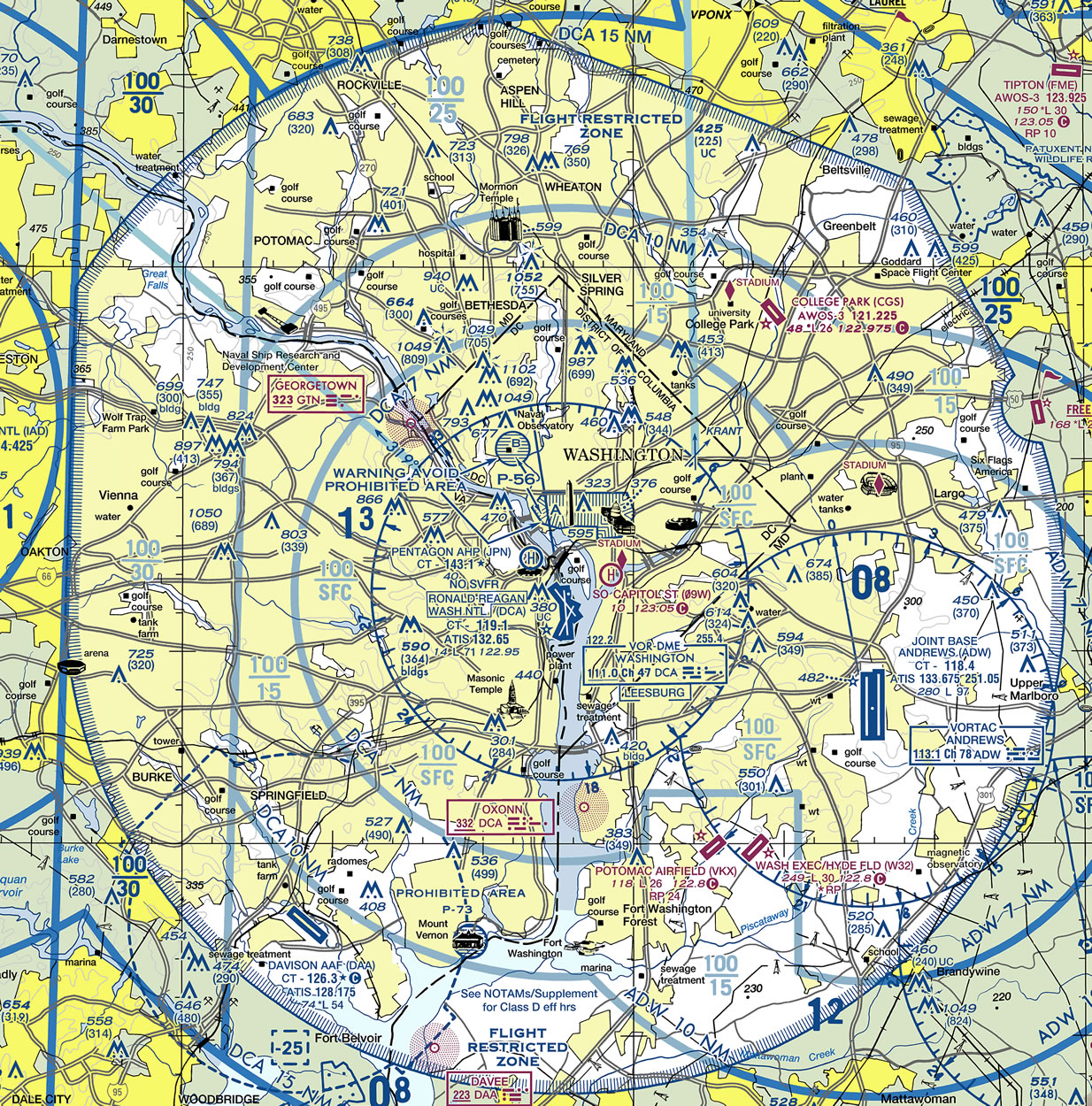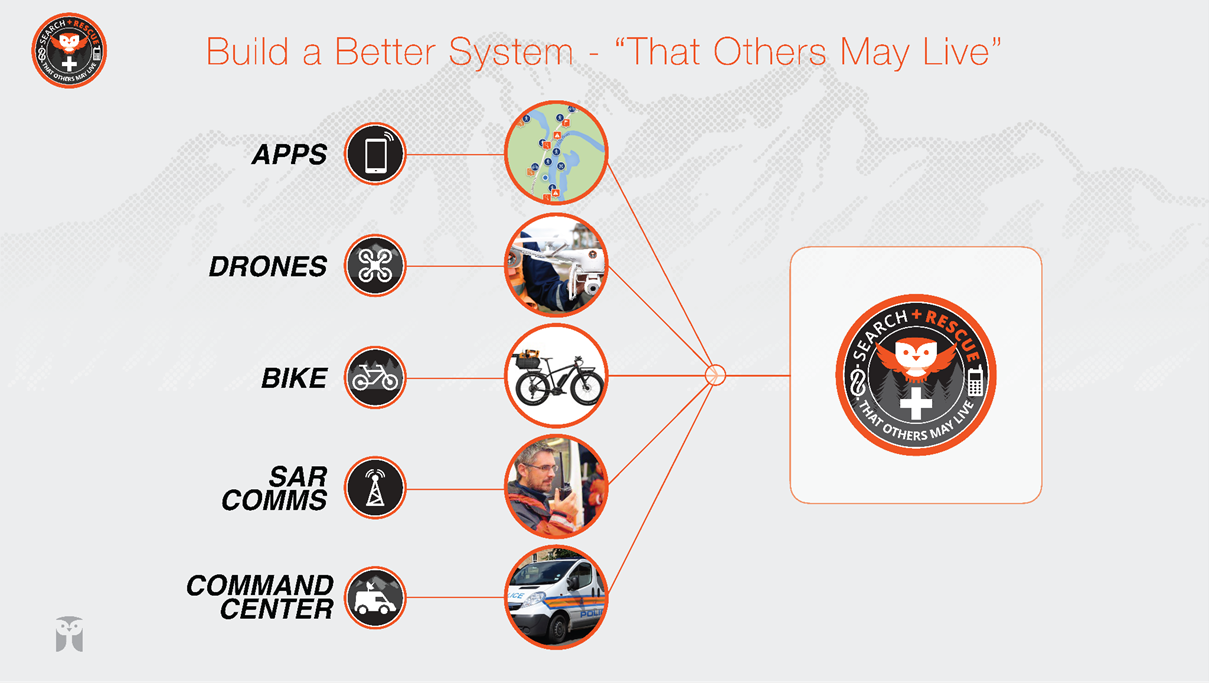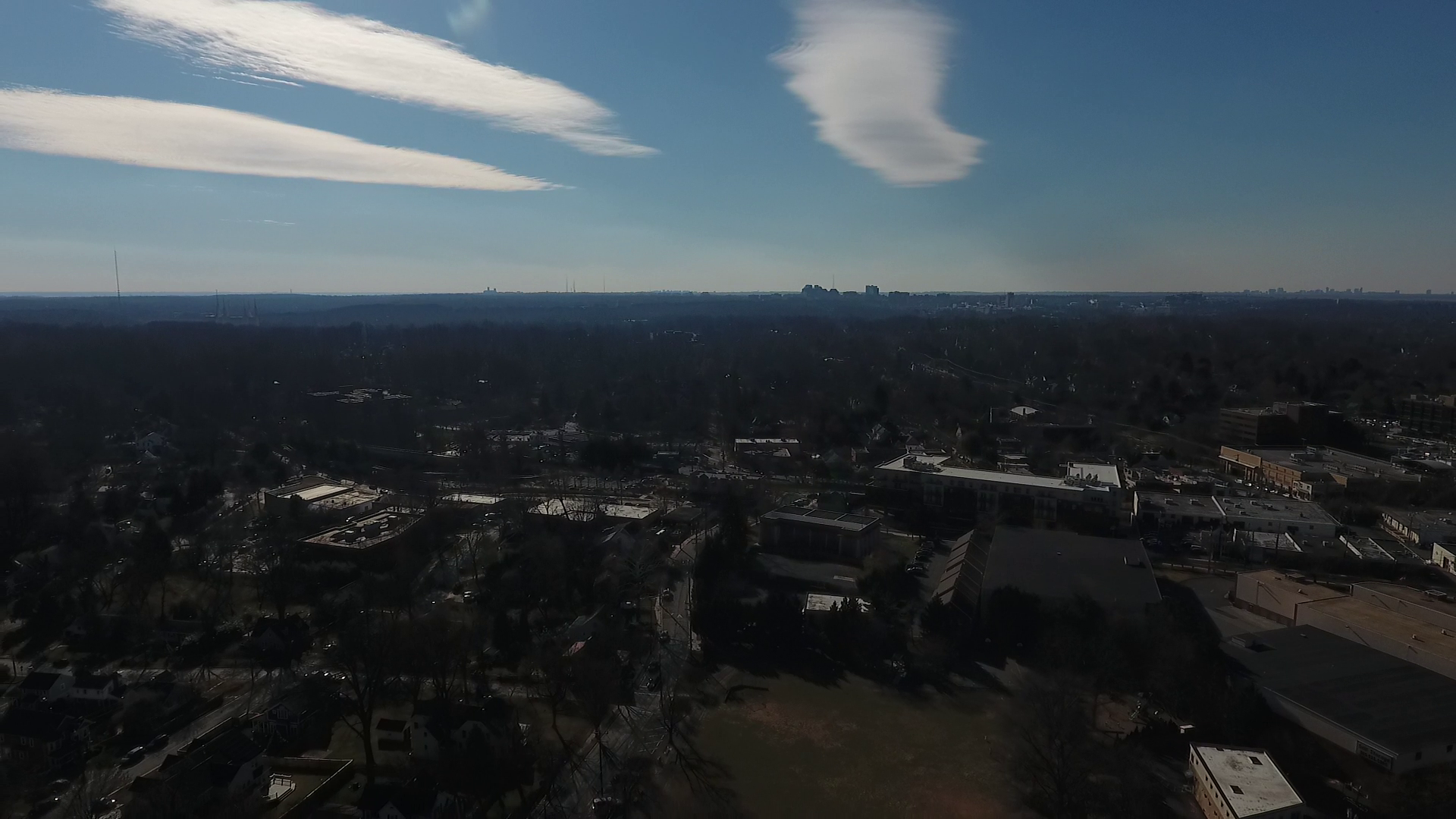Want to fly a drone, professionally and legally, in one of the most security-sensitive airspace in the U.S. ? It can be done but requires time and patience to pass the FAA Part 107 commercial UAS license test, complete the numerous forms, write a letter of intent, and pass the transparent-to-you background checks.
In this article we’ll describe the publicly documented procedures for creating and submitting waivers to fly a drone in the 15 nautical mile (radius) Washington, DC Flight Restricted Zone (DC FRZ) where aircraft flight, manned or not, is severely restricted and closely monitored. The DC FRZ, and the 30 nautical mile radius special flight rules area (SFRA) surrounding it were instituted after the September 11, 2001 terrorist attacks.
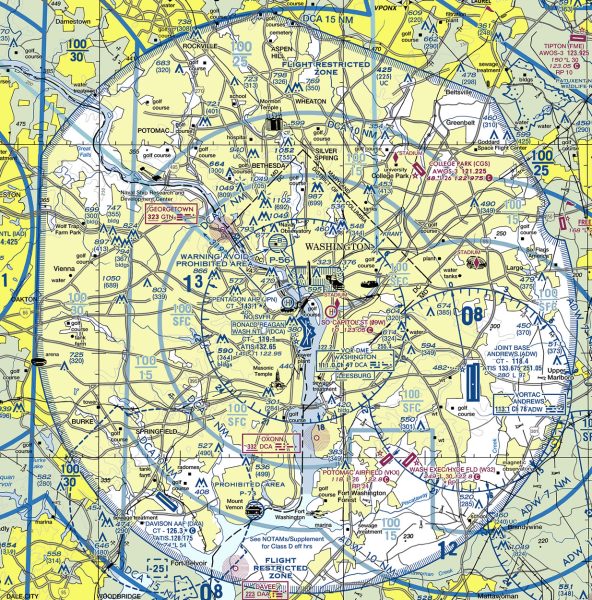
An excerpt of the Baltimore-Washington Terminal Area Chart, showing the DC FRZ (light color within the large hash-marked boundary) that surrounds Washington, DC.
Source: FAA
Tome has a recent history with Unmanned Aircraft Systems (UAS, or “drones”). In 2016, Tome worked with an automotive partner on a search-and-rescue concept that incorporated drones as flying communications relay platforms and as low-level search platforms with thermal and conventional cameras.
Tome’s metro Washington, DC office is within the FRZ and in 2016, there was no straightforward path to get permission to operate civil drones in that restricted zone. Colleagues still recall that at the time to test the Tome software under development, it was necessary to power up the drone—without propellers—and carry it around the office yard with one hand, while observing its telemetry on a device in the other hand. Good physical exercise but really not convenient. Real operations had to take place outside the FRZ, requiring a road-trip, the preparation and travel of which took time from actual development.
In late 2021 Tome was interested in re-visiting its drones and their capabilities, and in this time the FAA and TSA had in place a clear (but sometimes mystifying) path to allow planned, approved commercial drone operations in and around airports, and within the FRZ.
- The first requirement for any of these operations is that the drone pilot must hold a valid FAA Part 107 commercial drone certificate. Certificated Part 107 pilots must be current with respect to the FAA’s online recurrent training course. Licensed aircraft pilots (private pilots and higher) can take an online course and then take the online Part 107 test. Non aircraft pilots typically take an online course, and then take the Part 107 test at a FAA-certificated testing center. Once one earns a drone certificate, it is “lifetime”…yours until you give it up, or it is taken away.
- Each drone must be registered on the FAA’s DroneZone site under commercial Part 107 operations and each drone must be clearly labelled with its FAA registration number. There is a nominal cost to register a drone for commercial use and the registration is valid for several years. Note that drones registered as “Recreational” are not permitted to fly within the FRZ.
Now the more interesting task: We followed the waiver guidelines and completed a detailed online form on the FAA DroneZone section Part 107 Waivers & Airspace Authorizations that listed geographical location, address, pilot credentials, aircraft type and registration, purpose of flight and other pertinent facts. Within a few days we received a polite and helpful notice that the request was denied because we would be within the DC FRZ, and required online application to the TSA/FAA Waiver & Airspace Access Program.
Browsing to the TSA/FAA Waiver & Airspace Access Program, we registered for an account and noted in the description that the information one provides is shared with several significant U.S. government and law enforcement agencies. On that same page is a “click here” for more information link that lists the comprehensive documentation that must be submitted along with the online application. Reading and following this guide is essential!
We submitted the online form and the required documentation, carefully following the guidelines and asking ourselves “Is our material clear? Is this what is needed?” at every step.
Included were
- The required pictures of the Tome drones (flying! Like drones do!)
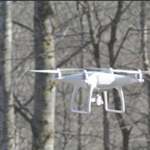
- A signed letter of purpose to the TSA Federal Air Marshal Service
- A large and small scale map of the proposed flight operations
- Personally identifiable information about the pilot and the required Visual Observer(s)
- Other detailed information
We clicked “submit” when everything seemed complete.
A week later, we logged into the TSA/FAA Waiver & Airspace Access Program site and were not surprised to see the application was denied “rejected based on insufficient or improperly formatted documentation to support your application. Please attached the SGI-COA form to waiver application.” The SGI-COA? We checked the guideline document but it didn’t mention a SGI-COA. We called the listed telephone help line, and asked “What’s missing here?”. A courteous and helpful agent pointed out that pictures of flying drones are nice and all, but they want to see the FAA registration label on the drone, and yes, the SGI-COA form isn’t listed in the guidelines, so I’ll email that to you, it that okay?
After completing this new form with much of the same information (I never did find out what “SGI” stood for) we copied the rejected application data to a new application, added the SGI-COA form with the others, replaced the exciting pictures of the drones with dull, static shots showing the drone’s FAA registration number boldly displayed, and clicked “submit” again.
Ten days later we received a phone call from a friendly agent who said the application was approved and was apologetic that their workload prevented a more prompt approval, but they extended the duration of the waiver, and was that okay?
YES! THAT IS OKAY!
With authorization document in hand we wrote an email to request activation of the waiver and sent it to an address specified in the waiver, listing a desired flight time 12 hours hence and quickly received a polite rejection: the request was not sent 24 hours in advance and lacking sufficient detail and would you please provide the answers to these questions and plan your flight 24 hours in advance, okay?
To their credit, every interaction with an agent was helpful and pleasant. Everyone was courteous and professional, just trying to help you get through the process, completely and accurately.
Readjusting the email again, and clicked SEND, and within a few hours an authorization email gave more specifics on how and when to contact the government authority coordinating UAS operations in the DC FRZ.
We were good to go.
A number of research flights were performed during the life of the waiver, and as an extra treat some pictures were taken with the drone’s camera.
Below is the view at 350 feet above ground level, taken safely and securely in the DC FRZ.

A view from 350 feet above ground level, within the DC FRZ. The white spires of the Washington D.C. Temple can be seen. To the right of the Temple and more distant is the National Cathedral in northwest Washington DC.

